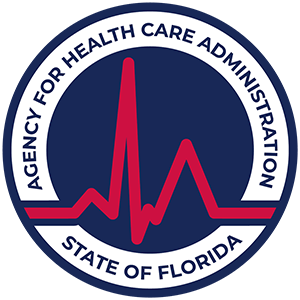Outline of Treatments for Drug Abuse
Explore the outline of treatments for drug abuse, including therapies, support, and medication strategies for recovery.

Therapeutic Group Approaches
Therapeutic group approaches play a significant role in the treatment of substance abuse. These methods create an environment where individuals struggling with addiction can share their experiences and learn from one another.
Power of Group Therapy
Group therapy is a powerful therapeutic tool for treating substance abuse. It helps reduce isolation and fosters a sense of community among participants. By witnessing the recovery of others, individuals can find inspiration and motivation in their own journey to recovery. Group therapy also addresses issues commonly associated with substance abuse, such as depression, isolation, and shame.
The dynamics of group interactions can be incredibly beneficial. Participants provide support, understanding, and different perspectives that can help one another navigate their challenges. This shared experience can reduce the stigma associated with addiction and encourage openness and healing.
Models of Group Therapy
The Substance Abuse Treatment Improvement Protocol (TIP) outlines five models of group therapy that are effective in substance abuse treatment. Each model addresses different aspects of recovery and caters to various needs of individuals in the program. The five models include:
Model TypeDescriptionPsychoeducational GroupsFocus on educating participants about substance abuse, its effects, and coping strategies.Skills Development GroupsEmphasize the building of life and coping skills to manage stress, triggers, and cravings.Cognitive-Behavioral GroupsUse cognitive-behavioral therapy techniques to change harmful thought patterns related to substance use.Support GroupsProvide emotional support from peers who share similar experiences and struggles.Interpersonal Process Group PsychotherapyFocus on interpersonal relationships and how they impact substance use and recovery.
These models can be adapted to suit different demographics and individual needs, ensuring that participants receive the relevant support during their recovery journey. For more detailed information about drug use and its implications, visit our section on what is drug abuse?.
Complementary Treatments
Complementary treatments play a significant role in the overall approach to managing substance use disorders (SUDs). These methods often focus on holistic healing and can be used alongside conventional therapies.
CAM Therapies Overview
Complementary and alternative medicine (CAM) therapies are increasingly popular among individuals seeking treatment for addiction. Between 2001 and 2020, the most common CAM therapies utilized were acupuncture and CAM psychotherapies, such as mindfulness meditation [2]. These therapies aim to address addiction from a holistic perspective, enhancing treatment efficacy and patient well-being.
Many individuals find CAM interventions beneficial for preventing addiction, increasing treatment compliance, and improving overall treatment outcomes. However, it is vital for those seeking these therapies to remain cautious, as many interventions lack substantial evidence for effectiveness or safety.
Therapy TypeCommon Techniques/PracticesMindfulness MeditationMindfulness-based cognitive therapyAcupunctureTraditional Chinese acupunctureHerbal RemediesVarious plant-based treatmentsYogaPhysical exercises, breathing, and meditation
Acupuncture and CAM Psychotherapies
Acupuncture has emerged as a hotspot within CAM treatments for substance use disorders. This practice involves stimulating specific points on the body using thin needles to promote balance and healing. Research indicates that acupuncture may help alleviate withdrawal symptoms and cravings in individuals recovering from substance use, making it a valuable adjunct therapy.
CAM psychotherapies, particularly mindfulness meditation, are also gaining recognition. Mindfulness practices aim to cultivate awareness and acceptance, allowing individuals to understand and manage their cravings effectively [2]. Integrating these therapies into traditional treatment modalities can enhance the therapeutic experience and support long-term recovery.
Global Focus on CAM for SUDs
The global attention to CAM for SUDs highlights the importance of understanding how these treatments can complement traditional medicine. Major research hubs include the USA, China, and England, with India and Pakistan increasingly evaluating CAM for substance use treatment. Ongoing research aims to assess which strategies are effective for integration into standard treatment protocols.
While exploring CAM therapies, it is essential to remain informed. Many alternative treatments lack thorough research backing their safety and efficacy, and individuals should approach them with caution. Being educated about the potential benefits and risks ensures that individuals can make informed decisions about their recovery journey. For more information about drug abuse, visit what is drug abuse?.
Behavioral Interventions
Behavioral interventions play a vital role in treating substance use disorders (SUDs). These interventions combine pharmacotherapy and behavioral strategies to enhance treatment effectiveness and foster long-term recovery.
Pharmacotherapy and Behavioral Therapy
Pharmacotherapy refers to the use of medications to manage addiction symptoms and cravings. When combined with behavioral therapies, such as cognitive behavioral therapy (CBT) and motivational interviewing (MI), patients experience better outcomes. CBT helps individuals understand the relationship between their thoughts, feelings, and behaviors, while MI enhances motivation to change substance use behaviors [4].
The integration of medication with behavioral approaches addresses both the psychological and physical aspects of addiction. For example, disulfiram, a medication for alcohol dependence, is often more effective when paired with CBT. This dual approach aids in developing coping mechanisms and reducing the likelihood of relapse.
Behavioral Treatment Strategies
Various evidence-based behavioral treatments exist, ensuring tailored support for individuals dealing with addiction. Some prominent strategies include:
Behavioral StrategyPrimary FocusEffectivenessCognitive Behavioral TherapyChange thought patternsHigh for cocaine usersMotivational InterviewingBoost personal motivationStrong for alcohol usersContingency ManagementRewards for achieving behavioral goalsSignificant reductions in illicit drug use
Evidence-Based CAM Approaches
Complementary and alternative medicine (CAM) approaches can also support traditional behavioral interventions. Some evidence-based CAM strategies may enhance the recovery experience. These approaches can include:
Incorporating these CAM methods alongside mainstream therapies can create a holistic treatment plan catering to individuals' diverse needs.
For more information on what defines drug abuse and its implications, consider visiting what is drug abuse?. Understanding the different facets of treatment is crucial in navigating the path toward recovery.
Peer Support Programs
Peer support programs play a significant role in the treatment of addiction. They provide an environment where individuals can connect with others who have experienced similar struggles. The following sections explore the benefits, impact, and success stories associated with peer support groups.
Benefits of Peer Support Groups
Peer support groups offer numerous advantages in the treatment of addiction. These benefits often include improvements in areas such as substance use reduction, increased treatment engagement, and enhanced self-efficacy. Research has indicated that individuals involved in peer support programs report lower risk behaviors related to human immunodeficiency virus (HIV) and hepatitis C virus (HCV), as well as decreased cravings.
Some key benefits include:
BenefitDescriptionIncreased MotivationPeer groups foster a sense of accountability and encouragement among members.Enhanced Coping SkillsSharing experiences helps individuals develop better coping mechanisms for cravings and triggers.Reduced IsolationConnecting with others in similar situations reduces feelings of loneliness, which can be a trigger for substance use.Practical AdviceMembers often share useful strategies and tips for navigating challenges they face during recovery.
Impact on Substance Use
The impact of peer support programs on substance use can be profound. Studies have shown that participants engaging in peer recovery services, such as the Recovery Community Services Program, experienced significant reductions in substance use. Most participants indicated sustained abstinence from alcohol or drugs at a 6-month follow-up [5].
Furthermore, peer support initiatives that emphasize community building, leadership, and communication skills have been linked to decreased relapse rates among individuals in recovery, especially those living in supportive housing NCBI.
Peer Mentoring Success Stories
Peer mentoring has shown remarkable results for individuals with substance use disorders. Mentors participating in programs focused on alcohol problems have reported significant reductions in both alcohol and drug use, successfully sustaining their abstinence through the duration of the program [5].
Another success story involves a peer mentoring behavioral intervention designed for injection drug users. This program effectively reduced high-risk injection practices that could lead to the transmission of hepatitis C virus compared to a control group, highlighting the importance of peer support in promoting safer practices.
Incorporating peer support programs into addiction treatment strategies creates an environment conducive to recovery. The shared experiences, mutual understanding, and encouragement found in these programs significantly enhance the overall effectiveness of treatment for individuals battling addiction. For more comprehensive insights into various treatment options, refer to the outline of treatments for drug abuse.
Cognitive-Behavioral Strategies
Cognitive-behavioral strategies play a significant role in the treatment of individuals struggling with addiction. These approaches focus on altering patterns of thinking and behavior to foster recovery and promote healthier choices.
Cognitive Behavioral Therapy (CBT)
Cognitive Behavioral Therapy (CBT) is grounded in social learning theories. This therapeutic approach has been demonstrated to be effective for individuals dependent on cocaine, especially when paired with pharmacotherapies like disulfiram. The focus of CBT is to help patients identify and modify distorted thinking patterns related to drug abuse, ultimately promoting healthier behavior related to substance use. For more information, you can visit what is drug abuse?.
Key Features of CBTFocuses on changing negative thought patternsEncourages self-monitoring of behaviorCombines behavioral strategies with cognitive interventionsEffective for various substances, including cocaine
Motivational Interviewing (MI)
Motivational Interviewing (MI) is an approach based on motivational psychology. It has shown strong support for treating alcohol users and is also effective for drug users. MI aims to reduce drug use behaviors and encourage individuals to make positive changes in their lives. By fostering a non-judgmental and supportive environment, MI helps clients explore their motivations for change.
Key Aspects of MIFocuses on client-centered dialogueEnhances intrinsic motivation for changeAssists in resolving ambivalence about substance useProven effective for various drug behaviors (NCBI)
Contingency Management (CM)
Contingency Management (CM) utilizes behavioral reinforcement to promote recovery from substance use disorders. Research has shown CM to be effective for various substances, including alcohol, cocaine, and opioids. The procedures involve providing rewards (like vouchers for goods) for achieving specific milestones in recovery, encouraging continuous engagement in treatment.
Effects of CMModerate efficacy across various substancesGreater effectiveness for some substances over othersEmploys reinforcers such as vouchers or lottery-like rewards (PubMed Central)
Incorporating these cognitive-behavioral strategies into treatment plans can provide individuals with the skills needed to manage addiction effectively. For further insight into addiction and related issues, consider exploring factors influencing drug use or addressing the notion of relapse with does relapse mean treatment failed?.
Medication-Assisted Treatments
Medication-assisted treatments (MAT) are vital in the recovery process for individuals grappling with substance use disorders (SUDs). These treatments combine medications with counseling and behavioral therapies, improving the chances of successful recovery.
FDA-Approved Medications
Several medications have received approval from the FDA for use in treating various forms of addiction. These medications are designed to help individuals reduce cravings, manage withdrawal symptoms, and ultimately promote abstinence from drugs or alcohol. Here are some commonly used FDA-approved medications:
MedicationPurposeNotesDisulfiram (Antabuse)Alcohol dependenceCauses unpleasant reactions when combined with alcohol, serving as a deterrent to drinking.MethadoneOpioid use disorderReduces drug-seeking behavior and cravings [6].BuprenorphineOpioid use disorderDecreases cravings and opioid use while reducing the risk of diseases [6].NaltrexoneAlcohol dependenceBlocks opioid receptors to reduce the rewarding effects of alcohol.TopiramateAlcohol dependenceEffective in reducing heavy drinking; further research needed for its application in addiction.
Pharmacotherapies for SUDs
Pharmacotherapies play a critical role in managing substance addiction. Medications like methadone and buprenorphine are acknowledged as the most effective treatments for opioid use disorders. They not only curb cravings but also reduce the likelihood of engaging in criminal activities associated with drug use. Combining these pharmacological approaches with behavioral interventions enhances the likelihood of achieving long-term recovery.
Addressing Neurobiological Vulnerabilities
Understanding the biological aspects of addiction is crucial in developing effective treatments. Research has explored the neurobiological vulnerabilities associated with addiction, leading to the creation of medications such as buprenorphine and naltrexone. These substances target specific brain pathways involved in addiction, aiding in individualized treatment plans. Efforts to identify biomarkers could further enhance treatment responses, allowing for more tailored medication choices.
Integrating medication-assisted treatments into a comprehensive recovery program can significantly improve the outcomes for individuals facing the challenges of addiction. To learn more about the landscape of drug abuse, consult our article on what is drug abuse?.
References
[2]:
[3]:
[4]:
[5]:
[6]:
[7]:














.svg)








